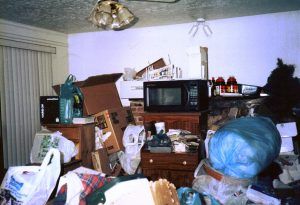Get Help with Hoarding Disorder and Hoarding Clean-Up

Overview of Hoarding Disorder and Its Consequences
Treating Hoarding Disorder
Mental health professionals use the guidelines in the American Psychological Association's DSM 5 to diagnose hoarding disorder. Trained psychologists and psychiatrists may seek a variety of methods to treat hoarding disorder, such as psychotherapy, medication, as well as clear lifestyle changes.
If you are concerned that you or someone you know may suffer from hoarding disorder, contact a public safety office in your area to see what local resources are available.
MasterTech Environmental of Myrtle Beach Can Help
Even though it may feel like a monumental task, MasterTech Environmental of Myrtle Beach is experienced in cleaning up a hoarding situation. Our team is aware of the emotional toll it takes on those with hoarding disorder, and we are sensitive to your situation as we return your home to a clean and safe condition.
MasterTech Environmental of Myrtle Beach is a team of licensed and professional technicians qualified to clean up after hoarding. We are also capable of handling jobs involving cleanup of biohazard material, bodily waste, and severe mold. We can create a specific cleaning plan to ensure that we save important items of value, and our cleaning products are all EPA-certified and environmentally friendly.
To learn more about hoarding cleanup, please visit our website or contact us today.



